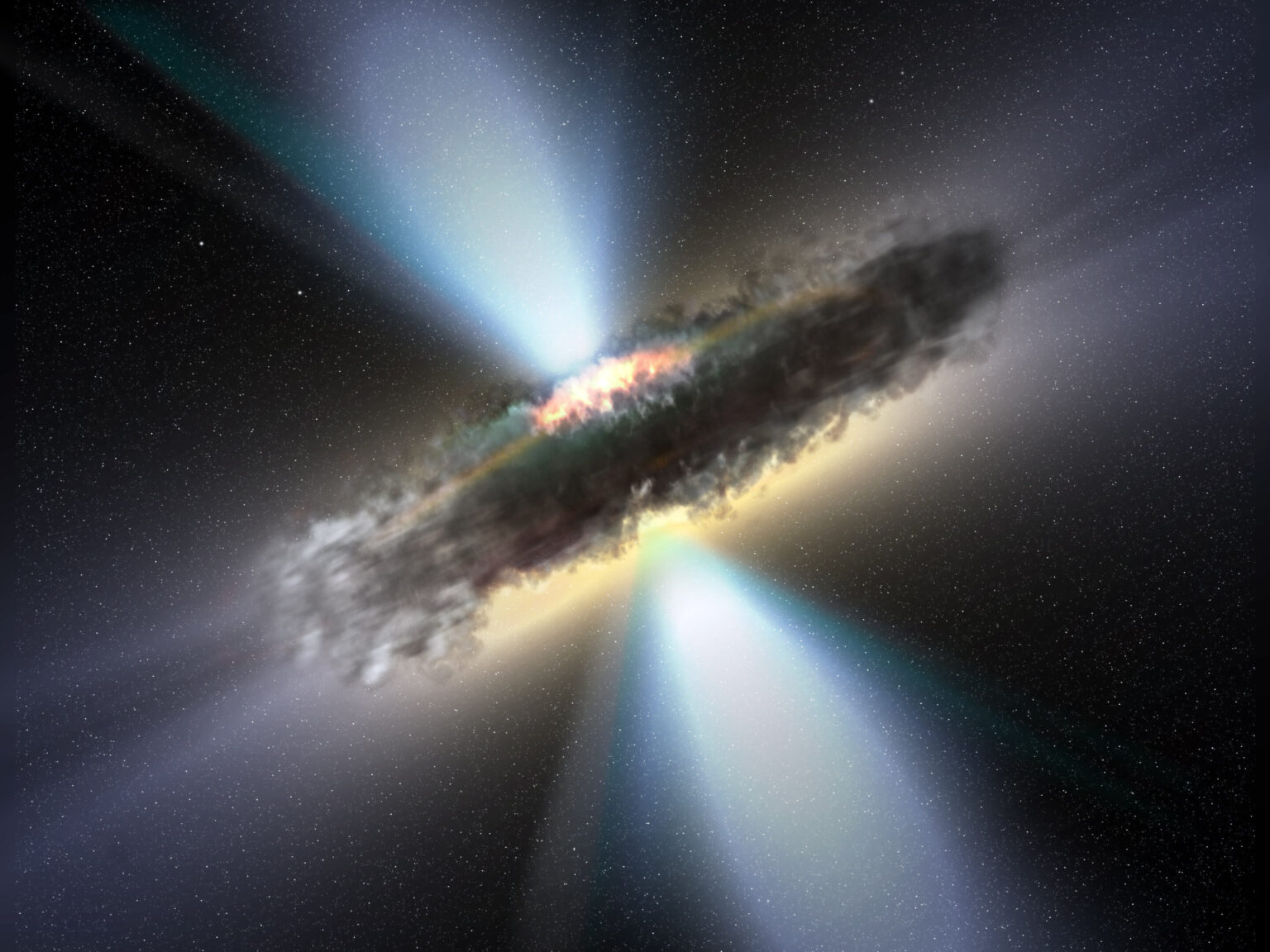Scientists have concluded that a lot of quasars can be hidden from us by the dust that fills their home galaxies. Previously, it was believed that dust torus was concentrated around them.

Quasars hiding in the dust
Carolina Andoni, a graduate student at the Center for Extragalactic Astronomy at Durham University, recently published an article on the study of quasars in the journal Monthly Notices of the Royal Astronomical Society. There, she and other co-authors studied these active supermassive black holes.
Quasars are energy sources that we see through the entire cosmos. In fact, they are not very different from ordinary supermassive black holes like Sagittarius A*, which is located in the center of the Milky Way. The difference lies only in the dust and gas that fall on them and generate rays that strike from the poles of these objects.
The main thing that was studied in the new research is quasars, which seem weaker than others. Scientists tried to find out the reason for this phenomenon using the Atacama Large Millimeter Array (ALMA). With its help, they observed quasars located in galaxies with a lot of dust.
What role does dust play
Traditionally, it is believed that in galaxies containing a quasar, dust is located mainly in a small torus surrounding a black hole. And since we see the quasar mainly when it is turned towards us by the pole, it is believed that this obstacle does not significantly affect its luminosity.
However, researchers who observed quasars found that this was not the case. Galaxies can contain so much dust that it literally hides quasars from us, even when the star system is turned towards us not by an edge but by a plane.
Moreover, scientists have discovered that some of these galaxies are actually dwarfs, with a diameter of no more than 3 thousand light-years. At the same time, up to 1,000 new luminaries are formed in them annually. This is a hundred times more than in the Milky Way, which has a diameter of 100 thousand light-years.
Scientists think that galaxies in which gas and dust completely cover the quasar are the initial stage of the evolution of many star systems. The black hole is actively growing in them, absorbing and ejecting dust. This process, in turn, stimulates the flare of star formation in the galaxy.
According to phys.org
Follow us on Twitter to get the most interesting space news in time
https://twitter.com/ust_magazine
